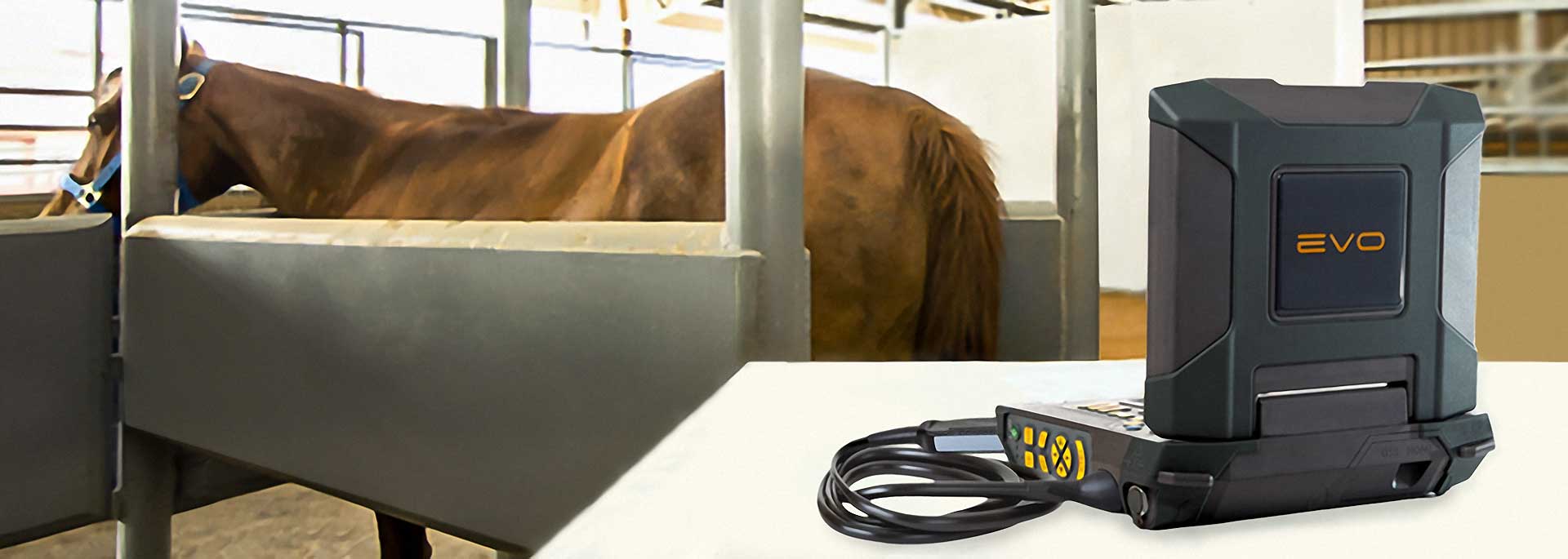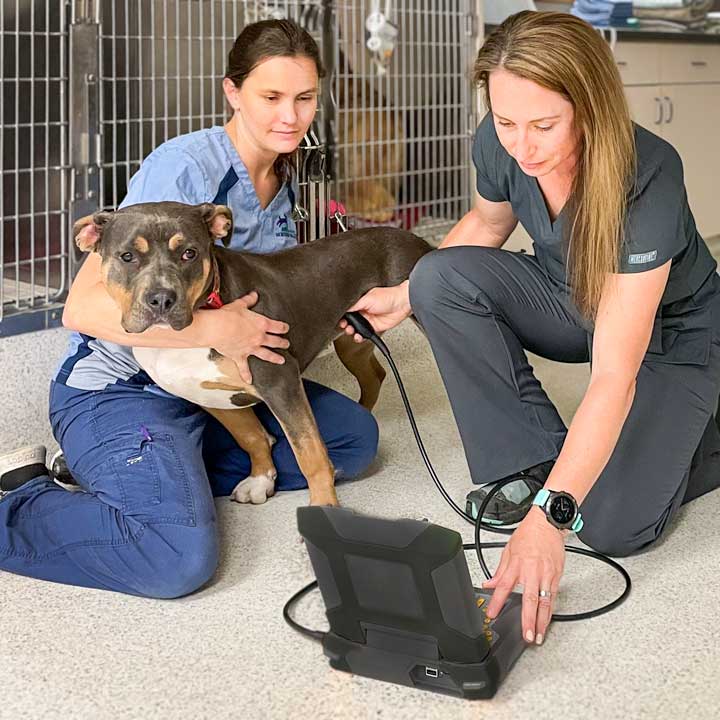
So you've decided to breed your mare! This can be a very exciting time, but it can be overwhelming as well. The process is at times frustrating if you encounter fertility issues, and can be expensive even when everything goes perfectly. Once your mare is bred, routine ultrasound exams should be scheduled. Your veterinarian may wish to conduct the following exams...
14-day Equine Ultrasound
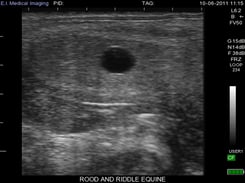 Two weeks post ovulation will be your mare's first pregnancy check. At this point the embryonic vesicle will look like nothing more than a small (~1.5cm) fluid-filled round structure in the uterus. The purpose of this exam is essentially two fold; it confirms pregnancy and allows for early identification of twins. In the first couple weeks of pregnancy, the embryo is moving, unattached, throughout the uterus. Approximately 17 days post-ovulation, it implants into the uterine lining, where it will grow to term. Therefore, it is important that twins be identified prior to the 17th day so that they can be manually separated and one of them terminated (mares are rarely able to carry twins to term, so most often one is sacrificed early to give the other the best chance at survival). If twins are identified after implantation occurs, reduction can become more difficult for the veterinarian and may put the other embryo at risk as well.
Two weeks post ovulation will be your mare's first pregnancy check. At this point the embryonic vesicle will look like nothing more than a small (~1.5cm) fluid-filled round structure in the uterus. The purpose of this exam is essentially two fold; it confirms pregnancy and allows for early identification of twins. In the first couple weeks of pregnancy, the embryo is moving, unattached, throughout the uterus. Approximately 17 days post-ovulation, it implants into the uterine lining, where it will grow to term. Therefore, it is important that twins be identified prior to the 17th day so that they can be manually separated and one of them terminated (mares are rarely able to carry twins to term, so most often one is sacrificed early to give the other the best chance at survival). If twins are identified after implantation occurs, reduction can become more difficult for the veterinarian and may put the other embryo at risk as well.
21-day Equine Ultrasound
Because most pregnancy loss occurs early in a mare's gestation, a 3-week pregnancy check can be very useful in identifying embryos that are not developing normally. During this exam, the veterinarian will likely measure the embryo and evaluate the appearance of the fluid within it to determine how viable the pregnancy looks. In the thoroughbred industry, for example, when early foals are preferred and the goal is to have a mare pregnant as early as possible, these frequent exams allow the veterinarian to closely monitor the success of the pregnancy.
28 day Equine Ultrasound
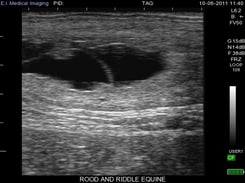 At four weeks post-ovulation, a recognizable embryo and fetal membranes are visible. Most importantly, a heartbeat can be seen. This is an important milestone; a strong heart beat (along with normal size and fluid characteristics) is a good indicator that a pregnancy is healthy. This exam may be variable; it may be done as early as 25 days or late as 35 days.
At four weeks post-ovulation, a recognizable embryo and fetal membranes are visible. Most importantly, a heartbeat can be seen. This is an important milestone; a strong heart beat (along with normal size and fluid characteristics) is a good indicator that a pregnancy is healthy. This exam may be variable; it may be done as early as 25 days or late as 35 days.
45-day Equine Ultrasound
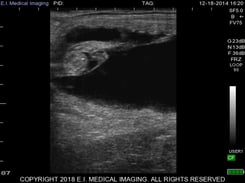 By about 40 days of pregnancy, structures called endometrial cups have formed in the placental attachment to the uterus. These structures secrete hormones that stimulate the ovaries to produce progesterone in order to maintain the pregnancy. Even if the pregnancy is lost after this point, the endometrial cups will remain and the mare will not return to a normal estrous cycle until they are sloughed at about 120 days. This exam lets the veterinarian know that all is well at this critical point. A pregnancy that looks questionable at an earlier exam may be terminated prior to 40 days in order to ensure that the mare can be brought back into season and rebred.
By about 40 days of pregnancy, structures called endometrial cups have formed in the placental attachment to the uterus. These structures secrete hormones that stimulate the ovaries to produce progesterone in order to maintain the pregnancy. Even if the pregnancy is lost after this point, the endometrial cups will remain and the mare will not return to a normal estrous cycle until they are sloughed at about 120 days. This exam lets the veterinarian know that all is well at this critical point. A pregnancy that looks questionable at an earlier exam may be terminated prior to 40 days in order to ensure that the mare can be brought back into season and rebred.
60-day Equine Ultrasound
Fetal gender determination (fetal sexing) is a service that is rapidly increasing in demand. A veterinarian skilled in this technique can identify the gender of a fetus with remarkable accuracy at approximately 60 days gestation.
Many veterinarians like to do a fall check between 90 and 180 days; this generally involves rectal palpation of the uterus and/or ballotment of the fetus (this is essentially a gentle bouncing of the uterus during rectal palpation. The fetus can be detected as it floats up and down in the fluid-filled uterus). Rectal ultrasound is not generally done at this point, as the fetus is deep enough in the abdomen that it is often not visualized. A couple of exceptions can be made; a mare that is at risk of placentitis might be examined with rectal ultrasound to evaluate the placental attachments, and trans-abdominal ultrasonography may be used to evaluate a pregnancy that is too late-term to visualize rectally.
There may be considerable variation in these exams depending upon the practitioner, the mare involved, and the importance placed on the timing of the pregnancy. Talk with your veterinarian about the frequency of exams that he or she recommends for your mare.
For information on trading in any manufacturer's ultrasound to trade up to the latest technology for equine reproduction, click here. For all other information, call us at 1.866.365.6596 or email us at info@eimedical.com.








